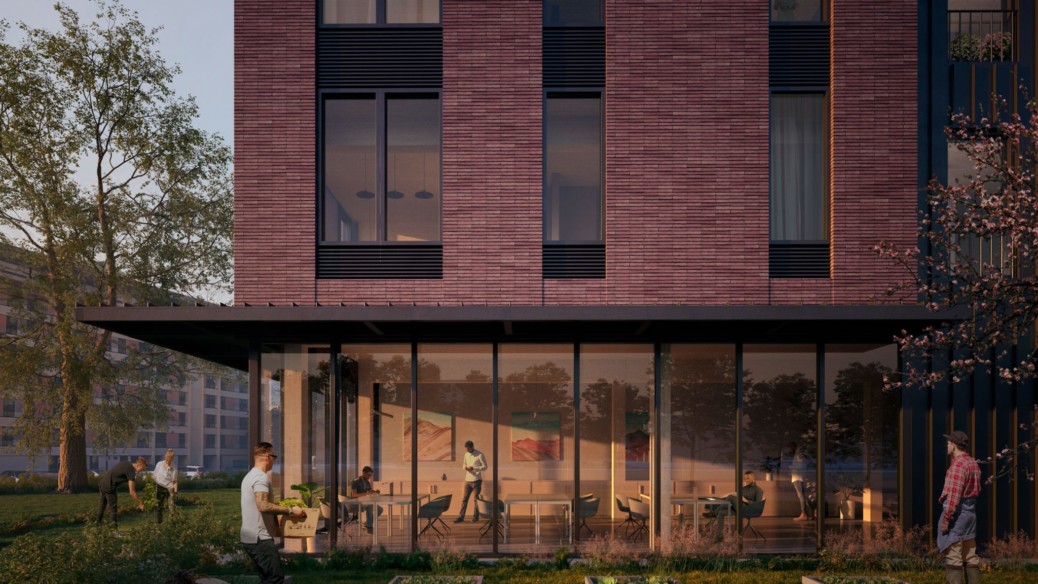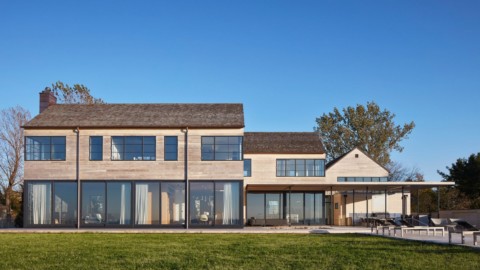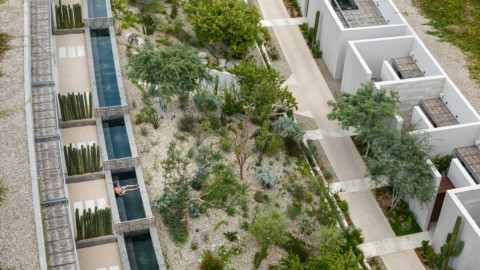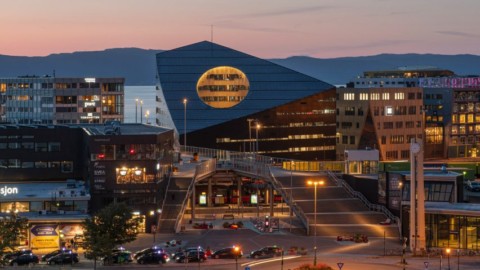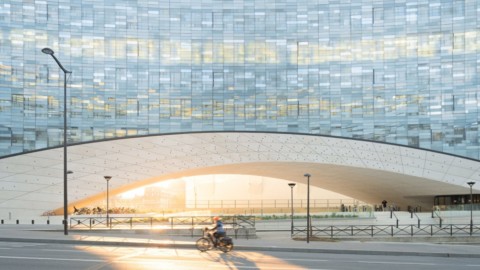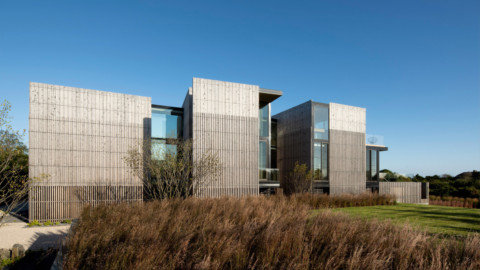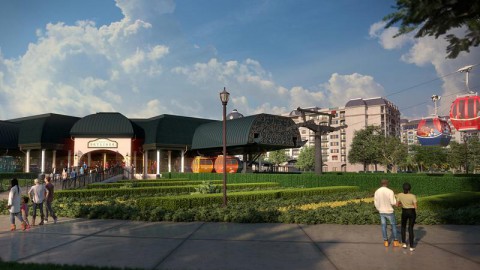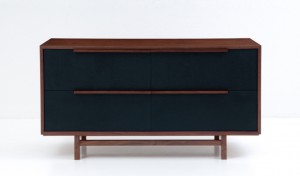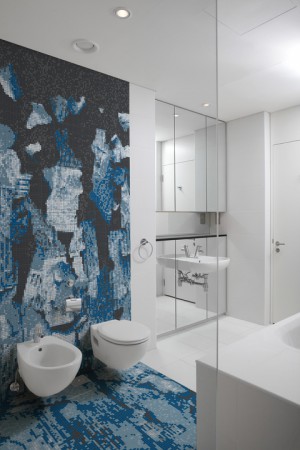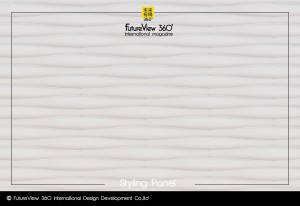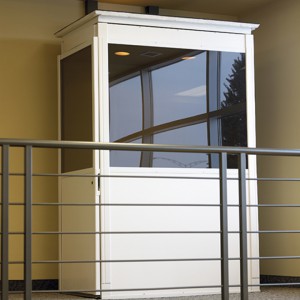Architecture studio Generate has developed the Tallhouse library of timber-based building systems to help architects build affordable housing and reduce construction-related carbon emissions by up to 50 per cent.
The architecture, engineering and construction company developed the online catalogue to provide architects with pre-engineered, timber-based construction systems that they can adapt for large-scale projects.
It includes four timber-based designs: a steel and cross-laminated timber (CLT) structure; a mass timber post, beam and plate structure; a light-gauge metal and CLT structure; and a full CLT plate honeycomb structure.
These designs can each be used as a “kit of parts” for buildings ranging from eight to 18 storeys.
By allowing architects to build quickly, sustainably and cost-effectively, Generate said Tallhouse could “revolutionise the construction industry”.
建築工作室Generate開發了基於木材的建築系統的Tallhouse庫,以幫助建築師建造經濟適用房,並將與建築相關的碳排放量減少多達50%。
建築,工程和建築公司開發了在線目錄,為建築師提供了預先設計的,基於木材的建築系統,他們可以適應大型項目。
它包括四種基於木材的設計:鋼和交叉層壓木材(CLT)結構; 大量的木材柱,樑和板結構; 輕金屬和CLT結構; 和完整的CLT平板蜂窩結構。
這些設計都可以用作8到18層不等的建築物的“零件套件”。
通過允許建築師快速,可持續和經濟高效地進行建造,Generate表示Tallhouse可以“革新建築業”。
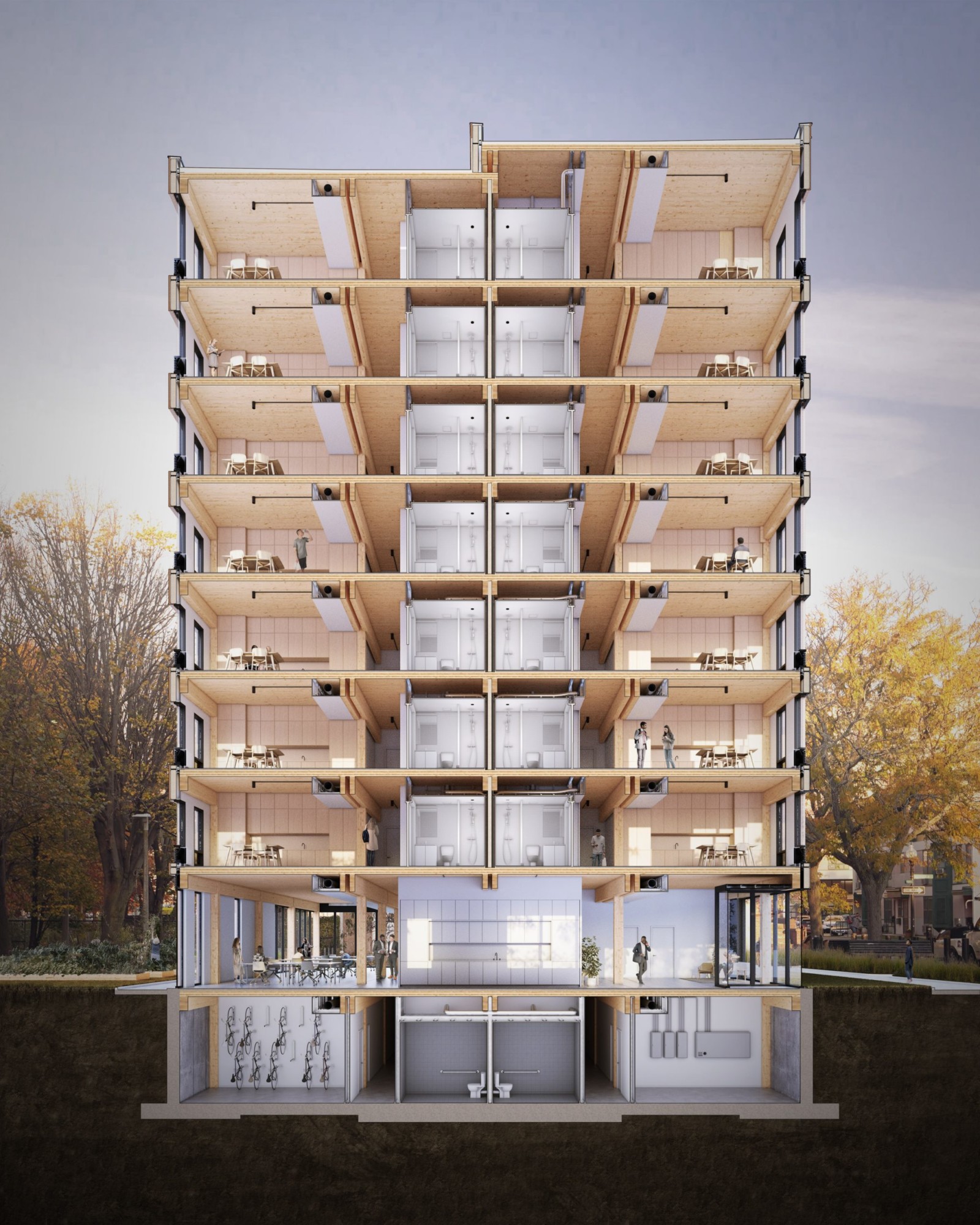
“Generate partners with architects and developers to digitally integrate these systems into their residential and commercial projects,” Generate CEO John Klein told Dezeen.
“Working with pre-vetted, replicable systems enables significant acceleration in project delivery, while permitting architects to spend more time on the creative process of design, resulting in the delivery of at once higher-quality and cost-effective projects.”
Boston-based Generate developed Tallhouse with Buro Happold Engineering, Niles Bolton Associates, Consigli Construction, Code Red Consultants, Olifant Market Development, Urbanica Development and Arup Engineering.
The project was conceived in response to a shortage of affordable housing and with an aim to reduce carbon-output in Boston. With buildings accounting for 40 per cent of all greenhouse gas emissions, Tallhouse offers digitally available designs with low carbon footprints.
Generate CEO John Klein告訴Dezeen:“與建築師和開發商建立合作夥伴關係,以數字方式將這些系統集成到他們的住宅和商業項目中。”
“與經過預先審查的,可複制的系統一起使用,可以顯著加快項目的交付速度,同時允許建築師將更多的時間花在設計的創新過程上,從而立即交付更高質量和具有成本效益的項目。”
總部位於波士頓的Generate與Buro Happold Engineering,Niles Bolton Associates,Consigli Construction,Code Red Consultants,Olifant市場開發,Urbanica Development和Arup Engineering共同開發了Tallhouse。
該項目是為應對經濟適用房短缺而設計的,目的是減少波士頓的碳排放量。 Tallhouse的建築物佔所有溫室氣體排放量的40%,因此可提供數字化的設計,並減少碳足跡。
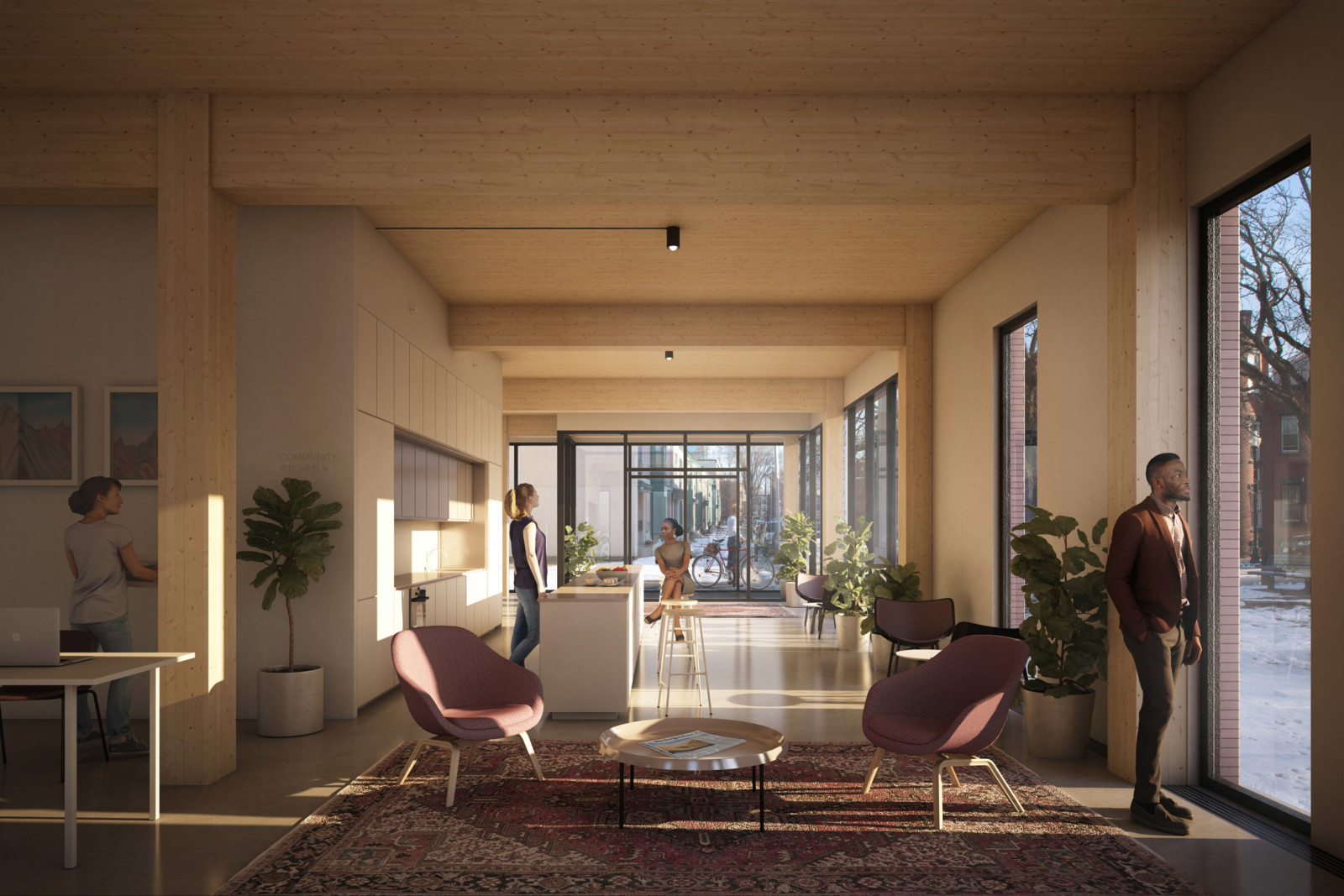
“By 2050, Boston expects to build 300,000 housing units, and 400,000,000 square feet (37,161,216 square metres) of commercial buildings,” Generate explained.
“In parallel, the city intends to have reduced its carbon footprint by 80 per cent in 2050 – an unachievable goal if the status quo of carbon-emitting structures is preserved.”
The four systems are based on heavy timber because it is more environmentally friendly than other materials – largely because it does not create as many carbon emissions in manufacturing and it also acts as a carbon store.
The systems can offer large reductions in carbon emissions, according to the team.
“Whole-building greenhouse gas emissions savings ranged from 14 to 52 per cent for structural solutions that use heavy timber compared to typical steel and concrete reference cases,” said Buro Happold Engineering principal Julie Janiski.
傑恩解釋說:“波士頓預計到2050年將建造300,000套住房,以及400,000,000平方英尺(37,161,216平方米)的商業建築。”
“與此同時,該市計劃到2050年將其碳足跡減少80%,如果保持碳排放結構的現狀,這是無法實現的目標。”
這四個系統基於重型木材,因為它比其他材料對環境更友好-很大程度上是因為它在製造過程中不會產生那麼多的碳排放,並且還可以充當碳儲存庫。
該團隊表示,該系統可以大幅減少碳排放。
Buro Happold Engineering的負責人Julie Janiski說:“與典型的鋼材和混凝土參考案例相比,使用重木材的結構解決方案的整個建築溫室氣體排放節省了14%至52%。”

Klein said Tallhouse’s “pre-vetted” library, which is code-compliant, also allows architects avoid the complications involved when using timber in construction.
“Novel construction technologies, like mass timber, take time to become widely adopted and integrated into the built environment,” he added.
“Lack of familiarity with materials, codes, detailing and overall design considerations require increased upfront considerations from design teams,” he added. “Having code, carbon and building quantity data digitally accessible allows architects to eliminate the upfront R&D, and focus more on design.”
Each Tallhouse design is evaluated by a Carbon Data Analysis tool, called Tally, to provide architects with information on the implications of building materials and systems and help them choose options to produce fewer greenhouse gas emissions.
The systems are intended to be used like a replicable kit of parts that can be integrated into designs. They also come with a prefabricated panelised exterior wall system, modular bathroom and modular kitchens, and prefabricated mechanical, electrical and plumbing assemblies.
Tallhouse is the latest project by Generate to use wood to create more environmentally friendly buildings.
It has also worked with developer Placetailor to design a carbon-neutral apartment block in Boston using a cross-laminated timber kit of parts.
Other ventures exploring the limits of timber construction include a digital model of what would be the world’s tallest mass-timber building by Alphabet’s Sidewalk Labs.
克萊因說,Tallhouse的“經過預先審查”的庫是符合代碼的,還使建築師能夠避免在建築中使用木材時所涉及的複雜性。
他補充說:“像大量木材一樣,新穎的建築技術需要時間才能被廣泛採用並整合到建築環境中。”
他補充說:“缺乏對材料,代碼,細節和整體設計考慮的了解,需要設計團隊增加更多的前期考慮。” “具有數字訪問的代碼,碳和建築數量數據,可使建築師消除前期研發工作,而將更多精力放在設計上。”
每個Tallhouse設計均由稱為Tally的碳數據分析工具進行評估,以為建築師提供有關建築材料和系統含義的信息,並幫助他們選擇減少溫室氣體排放的方案。
該系統旨在用作可複制的零件套件,可以集成到設計中。他們還配備了預製的鑲板外牆系統,模塊化浴室和模塊化廚房以及預製的機械,電氣和衛生設備組件。
Tallhouse是Generate的最新項目,旨在使用木材建造更環保的建築。
它還與開發商Placetailor合作,使用交叉層壓的木材套件設計了波士頓的碳中和公寓樓。
探索木材建築極限的其他項目包括由Alphabet的Sidewalk Labs設計的數字模型,該模型將成為世界上最高的大型木材建築。
FROM:https://www.dezeen.com/2020/10/30/tallhouse-digital-building-low-carbon-tallhouse/

